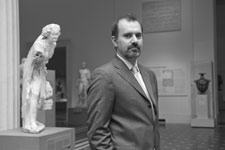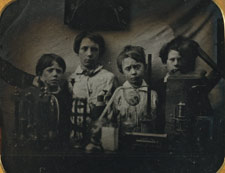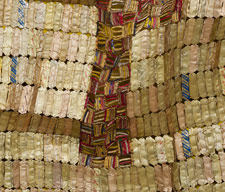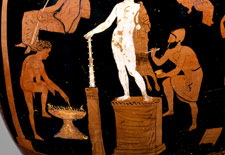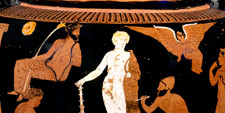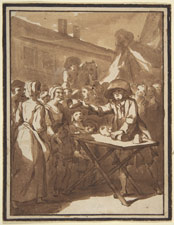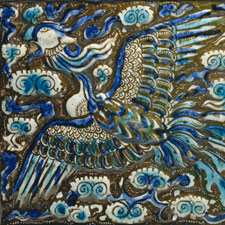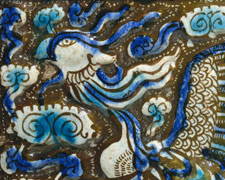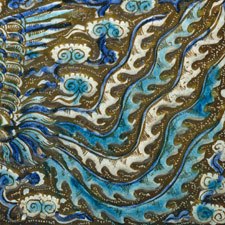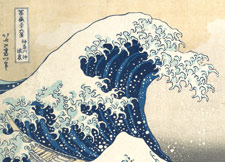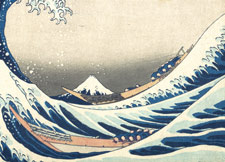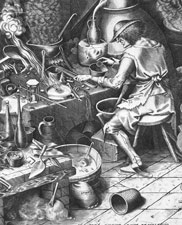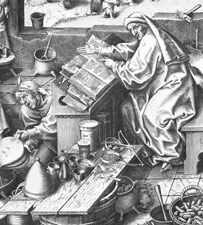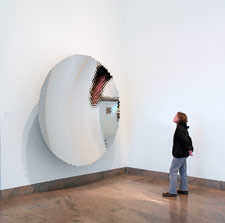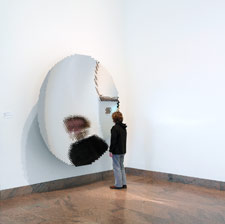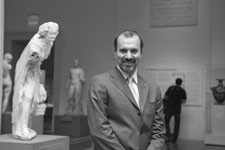New Connections appear every Wednesday. Sign up for a reminder.
 1280852
1280852 6011024
6011024 7701024
7701024 11801024
11801024 1280986
1280986 13741024
13741024 1129964
1129964 14051024
14051024 8091024
8091024 1280880
1280880 1280640
1280640 7941024
7941024 12801020
12801020 11161024
11161024 10241024
10241024 1112890
1112890 10241024
10241024 1280861
1280861 1280924
1280924 1280922
1280922 1280921
1280921 8301024
8301024 9241024
9241024 11951024
11951024 10341024
10341024 10291024
10291024 1280852
1280852
My name is Marco Leona. I am the chief scientist here at The Metropolitan Museum of Art and my topic is "Magic."
I grew up in Italy and magic is something that one would hear going out in the countryside and hearing about witches
and curses and legends. And science came in as a part of that. I'm not afraid to tell you that I had a
science chemistry box and made all kinds of stinking and staining and corrosive mixtures, many more than you can actually do today. And if it was not in the kit I supplemented it very quickly with all kinds of other stuff.
And that's magic that you have in your hand, right? You can make it there. Suddenly it's smoking; suddenly it's foaming; suddenly it has color. So, you sort of feel empowered.
Magic is traditionally about transformation: taking something that's baser
less refined, less valuable
and making it into something resplendent. If you look at a
sculptor's workshop from ancient Greece, you see a statue in the process of being finished. All sculpture was polychrome, it was painted in a naturalistic way. And so
we see that half of the statue's still white, the color of marble; there's a painter who is now making it lifelike.
The painter and the statue are not alone in their studio. The artist is assisted by the gods, so is part of a supernatural endeavor. He's performing magic.
Magic is what people in ages past used to call things they didn't understand. There are many things that we don't understand now, that we no longer call magic.
Very few people could explain how electric lights work, and we just decided that we don't call it magic, we know that it's science.
There's a wonderful frieze tile from twelfth century Iran, from a location called Takht-i Sulayman. The Persian artists went through a process of trial and error and logical deduction, trying to achieve something similar to porcelain from China.
Using their knowledge of glass technology, and through a very complicated firing procedure, they developed a technique to create gold, copper, or silver nanoparticles dispersed in glass layers.
And that interaction gives rise to green-yellow reflection. It's very complicated science that was understood in a functional way.
On anybody other than the person doing it and those in on the secret, this would have appeared like something absolutely magic.
The Great Wave by Hokusai, probably one of the most reproduced works of art in the world. What is so incredible about this piece of art, which everybody would say is quintessential Japanese art, is that, in fact
the deep blue in the wave that really gives us a sense of the ocean is Prussian blue, which had been discovered in Berlin in 1704. Without that blue, that print could not have been done.
When these prints appeared, because blue is associated with perception of depth and space, it's like a 3-D movie for us, it's like television. They changed the way of seeing, in a sense.
If you think about it, people like me a thousand years ago, were walking a very thin line, because
the powers that you had in creating things that were not known to the general population, not even to the powerful, were scary. Call them what you want—
artists, scientists, technologists, alchemists—were behind all of the objects you see at the museum.
Kapoor is playing some kind of magic. It's really a bag of tricks. It's a spherical mirror, it uses the same technology that's used in telescopes today, but
because of the way the image is returned to you—magnified, inverted, changing as you walk
in and out of its focus—it really engages you in a very physical, direct way. We are transformed, transfixed. So
magic is still possible.
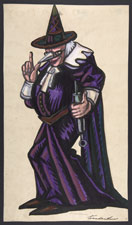 |
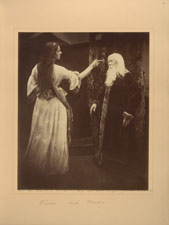 |
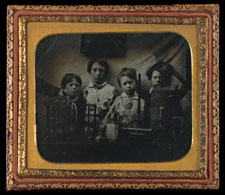 |
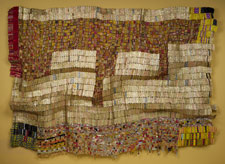 |
 |
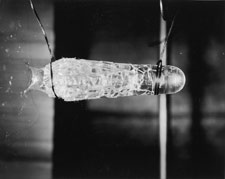 |
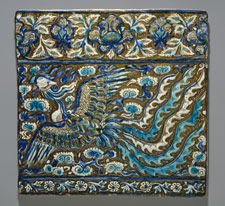 |
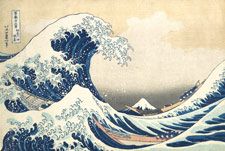 |
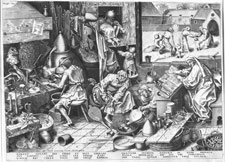 |
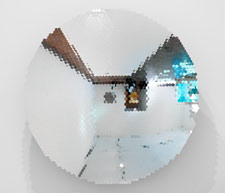 |
Works of art in order of appearanceLast Updated: June 22, 2015. Not all works of art in the Museum's collection may be on view on a particular day. For the most accurate location information, please check this page on the day of your visit. |
||
 |
Witch doctor 1922 Sergey Sudyekin (Russian) Engraving; first state Gift of William Wasserman, 1965 (65.715.8) More information: The Collection Online Not on view
|
 Drawings and PrintsSecond Floor
Drawings and PrintsSecond Floor |
 |
Vivien and Merlin 1874 Julia Margaret Cameron (British) Albumen silver print from glass negative David Hunter McAlpin Fund, 1952 (52.524.3.5) More information: The Collection Online Not on view
|
 PhotographsSecond Floor
PhotographsSecond Floor |
 |
Boys Behind a Science Experiment late 1850s Unknown Artist (British) Ambrotype The Rubel Collection, Purchase, Richard and Ronay Menschel Gift, 1997 (1997.382.50) More information: The Collection Online Not on view
|
 PhotographsSecond Floor
PhotographsSecond Floor |
 |
Between Earth and Heaven 2006 El Anatsui (Ghanaian) Aluminum, copper wire Purchase, Fred M. and Rita Richman, Noah-Sadie K. Wachtel Foundation Inc., David and Holly Ross, Doreen and Gilbert Bassin Family Foundation and William B. Goldstein Gifts, 2007 (2007.96) More information: The Collection Online Not on view
|
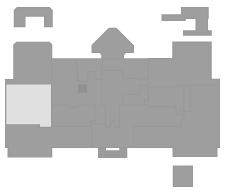 Arts of Africa, Oceania, and the AmericasFirst Floor
Arts of Africa, Oceania, and the AmericasFirst Floor |
 |
Column-krater (bowl for mixing wine and water) ca. 350–320 b.c.; red-figure Attributed to the Group of Boston 00.348 Greek, South Italian, Apulian Terracotta Rogers Fund, 1950 (50.11.4) More information: The Collection Online Not on view
|
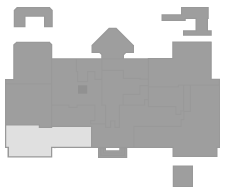 Greek and Roman ArtFirst Floor and Mezzanine
Greek and Roman ArtFirst Floor and Mezzanine |
 |
[Test Tube Shattering] 1934 Harold Edgerton (American) Gelatin silver print Gift of The Harold and Esther Edgerton Family Foundation, 1997 (1997.62.1) © Harold and Esther Edgerton Foundation, courtesy of Palm Press, Inc. More information: The Collection Online Not on view
|
 PhotographsSecond Floor
PhotographsSecond Floor |
 |
Frieze tile with phoenix ca. 1270s Iran (probably Takht-i Sulayman) Fritware, overglaze luster-painted Rogers Fund, 1912 (12.49.4) More information: The Collection Online Not on view
|
 Islamic ArtSecond Floor
Islamic ArtSecond Floor |
 |
The Great Wave at Kanagawa (from a Series of Thirty-Six Views of Mount Fuji) Edo period (1615–1868), ca. 1831–33 Katsushika Hokusai (Japanese); Published by Eijudo Polychrome ink and color on paper H. O. Havemeyer Collection, Bequest of Mrs. H. O. Havemeyer, 1929 (JP1847) More information: The Collection Online Not on view
|
 Asian ArtSecond Floor
Asian ArtSecond Floor |
 |
The Alchemist after 1558 Pieter Bruegel the Elder (Netherlandish), Philips Galle (Netherlandish), published by Hieronymus Cock (Netherlandish) Engraving; first state Harris Brisbane Dick Fund, 1926 (26.72.29) More information: The Collection Online Not on view
|
 Drawings and PrintsSecond Floor
Drawings and PrintsSecond Floor |
 |
Untitled 2007 Anish Kapoor (British, born India) Stainless steel Purchase, Lila Acheson Wallace Gift, and Cynthia Hazen Polsky and Leon B. Polsky Fund, 2008 (2008.29) © Anish Kapoor More information: The Collection Online Not on view
|
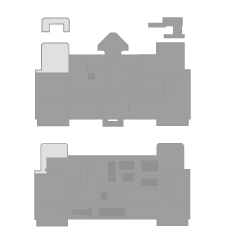 Modern and Contemporary ArtSecond Floor
Modern and Contemporary ArtSecond Floor |
© 2011 The Metropolitan Museum of Art |
||
